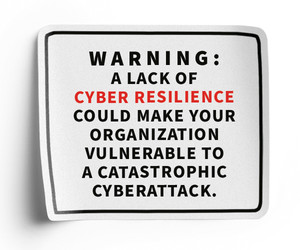The baselines include asset inventory, tightening IT and operational technology security, mitigating known vulnerabilities, running third-party validation of cybersecurity controls, supply chain incident reporting, strengthening vendor and supplier cybersecurity requirements, and changing default passwords. The hope is that these guidelines will fortify future defenses and help organizations detect any nation-state threat actors lying dormant in U.S. critical infrastructure.
Additionally, the North American Electric Reliability Corp. Critical Infrastructure Protection standards require companies to follow set security management controls, electronic security perimeters, systems security management, incidence reporting processes, vulnerability assessments and more.
EXPLORE: How to manage the convergence of IT and OT safely.
2. Governance: Providing Data Integrity and Compliance
Once your security measures are in place, effective data governance is the next step. Without data governance, energy and utility companies cannot trust if the data they are using is high quality and trustworthy.
The goal of governance is knowing where data comes from, what it is, who can access it and when it should be retired. To achieve this kind of quality data, an individual or team should be tasked with owning it, including how it is collected, validated, stored, shared and disposed of, with practices standardized across the organization.
With quality data, E&U companies can simplify their data analysis, compliance and reporting measures immensely, says Stewart Bond, vice president of IDC’s data integration and intelligence software service, in a recent BizTech article.
3. IAM Controls: Enhancing Operational Efficiency and Accountability
The third component is to deploy a set of identity and access management controls so only authorized individuals have access to sensitive data. IAM also provides a clearer sense of accountability for individuals with privileged access who are continually monitoring for abnormal activity and flagging potential threats, writes Sharon Chand, a principal at Deloitte Risk & Financial Advisory and the cyber risk secure supply chain leader for the firms’s Cyber Risk Services practice.
Once IAM is in place, organizations can start to move toward a zero-trust model, which can bridge any gaps in IT and OT security systems, according to the National Institute of Standards and Technology.
DIG DEEPER: How E&U companies can modernize their IT today.
According to NIST’s National Cybersecurity Center of Excellence, there are several ways to incorporate IAM into critical infrastructure, including:
- User authentication and authorization services based on identity and assigned roles
- Device authentication and authorization services to verify and control access for connected equipment
- Identity and access governance tools that convert human-readable access requests into machine-readable authorizations
- Industrial control system components, such as remote terminal units, programmable logic controllers and relays
- Physical access control devices that integrate standard communication interfaces
- Communication devices that enhance OT security by adding capabilities for authentication, authorization, access control, encryption and logging.
“Previously, there was a lot of focus on making the perimeter of a company very difficult to get into. That protected the organization’s soft center. Now, that perimeter is gone because a company is connected to its cloud provider, the grid system and other ecosystem partners across the company’s footprint. We need to extend cyber controls out to the endpoints where zero trust has a strong role to play,” says Chand.
Editor's Note: This article was originally published on October 16, 2024 and has been updated.











